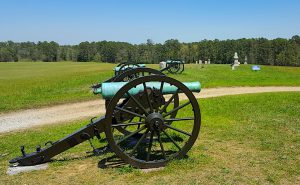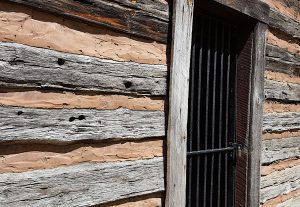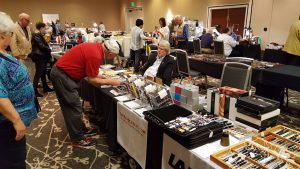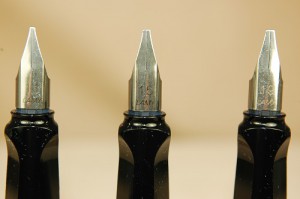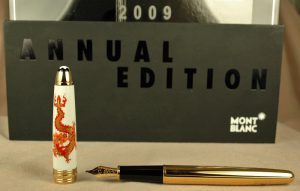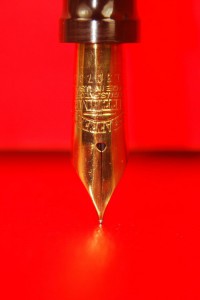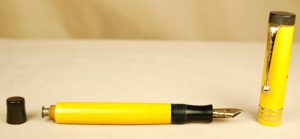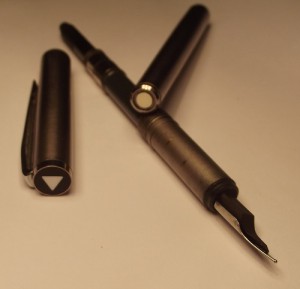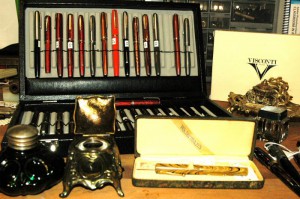DISCLAIMER: Painting in broad brush strokes, it will be nearly impossible to describe all of the individual experiences, personalities, struggles, complaints and desires of veteran vendors and folks who are newer to pen collecting. In listening to the “New Pen Show Attendee Forum” at the Chicago Pen Show–and in many conversations since–these are the observations I have made in an effort to better foster understanding and friendship between pen lovers of all ages.
Depending on who you talk to at a pen show…and depending on their age…it isn’t all that uncommon to hear variations of the following statements:
- “Young people never buy vintage. They only buy limited editions and cheap Asian junk.”
- “The veteran vendors are a bunch of grumps.”
- “New pen people are always breaking my pens.”
- “I’m sick of veteran pen dealers always ripping me off.”
In addition to that, each group seems to find the other group anti-social, although each group is extremely social. One chats all the time online, and the other prefers talking more in person. Each seems out of touch with the other, and it is high time we all got to know each other better. With all of the technology we have, there isn’t a lot of pen love out there any more, and we should unite.
Without further ado, Newbies, meet the…
VETERAN VENDORS:
Without most of the veteran vendors you meet today at a pen show, we wouldn’t have a hobby, and we likely wouldn’t have many–if any–new fountain pens being made.
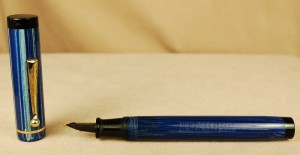 Pen collecting really got its start in the 1970s. The whole world had switched to ballpoints (there were no such things as rollerballs or gels), and everyone was convinced that no one was ever going back to fountain pens.
Pen collecting really got its start in the 1970s. The whole world had switched to ballpoints (there were no such things as rollerballs or gels), and everyone was convinced that no one was ever going back to fountain pens.
A group of younger people, almost entirely independent from one another at first, still loved the old fountain pens. They were drawn to them by their beautiful designs, superior writing qualities and curious filling systems.
The pens were plentiful and cheap. Seriously, guys have told me stories about finding Parker Duofolds for as cheap as a quarter at flea markets and in antique stores.
The more they bought, the more they got curious and became amateur historians. There was NO INTERNET. These guys had to track down vintage advertising, catalogs, former employees and corporate archives to find most of the information we can now find in 10 seconds online. They spent whole decades of their lives uncovering this information.
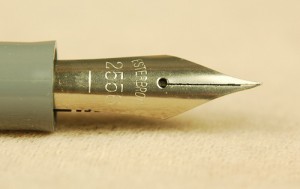 They also taught themselves and others how to restore vintage pens. One person even bought, restored and began using a rubber ink sac and diaphragm-making machine to keep supplying us the parts to keep restoring these pens.
They also taught themselves and others how to restore vintage pens. One person even bought, restored and began using a rubber ink sac and diaphragm-making machine to keep supplying us the parts to keep restoring these pens.
Many vendors/collectors became obsessed with finding perfect models of every pen a certain company made. Imagine tracking down every color and size of each model pen a company such as Sheaffer or Parker made. Many of these guys have museum-quality collections, and they got much of them for under $20 a pen! (This is an important detail to save for the second half of the post.)(It also is important to note that most of them have spent hundreds, if not thousands, to acquire a single rare model for their collections, as well.) (Another important detail.) These collectors often consider themselves “completists.”
Eventually, the different collectors began to find each other and form pen shows, clubs and publications. Again, no internet, so these organizations grew slowly.
Collecting among these folks–for many but not all–became very competitive. Bragging rights were involved with cutting the cheapest deal and making the largest-margin deal. Bragging rights also were involved in finding the rarest pens, knowing the most about a particular subject and sometimes even conning a fellow/rival collector. Most of it was good-natured, but some people got to playing a little rough, too. There are a lot of good pen war stories out there, for those who are interested.
For those who enjoyed the competitive side of collecting, their core philosophy was something to the effect of: “It is up to the individual buyers to do their due diligence before purchasing a pen. If you don’t investigate the pen and/or do your research, it is your fault for handing over the money without negotiating a better deal.” They also will be the first to tell you that they’ve all been ripped off more than once.
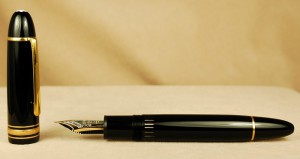 I’m not here to state whether that is right or wrong. I’m not saying every veteran vendor is that way. In fact, I think a lot of them are much more consumer friendly than that. (Many veteran vendors are actually very eager to meet and teach new collectors some of what they have learned in the past 40 years.) Mostly, I’m just trying to explain some of the bruises new collectors pick up at a pen show.
I’m not here to state whether that is right or wrong. I’m not saying every veteran vendor is that way. In fact, I think a lot of them are much more consumer friendly than that. (Many veteran vendors are actually very eager to meet and teach new collectors some of what they have learned in the past 40 years.) Mostly, I’m just trying to explain some of the bruises new collectors pick up at a pen show.
Further, it is very important to note that vintage vendors turned pen collecting into viable businesses. More than one-man shows, many of these businesses employed people and developed real operating costs. Demand and overhead contributed to the rising prices of pens.
By the late 1980s and early 1990s, pen shows were drawing thousands of attendees from around the world. Before long, pen companies began taking notice of the rising demand for vintage fountain pens. In 1992, Mont Blanc released the now coveted Hemingway fountain pen. It was a monster hit with vintage collectors and drew renewed interest from modern pen users. Around the same time, Parker reissued the Gen. MacArthur Duofold, resurrecting the iconic model for the 4th time.
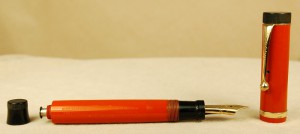 As the popularity of the hobby swelled, vintage pen prices ballooned. The internet and eBay made collecting much more accessible without the need for pen shows. Many of your veteran vendors are big eBay sellers, too. The hobby remained more vintage heavy until the Great Recession in 2008.
As the popularity of the hobby swelled, vintage pen prices ballooned. The internet and eBay made collecting much more accessible without the need for pen shows. Many of your veteran vendors are big eBay sellers, too. The hobby remained more vintage heavy until the Great Recession in 2008.
Everything went topsy turvy with the recession. Vintage prices crashed along with the stock market. Also, and very sadly, the folks who started the hobby in the 1970s began passing away. Pen makers the world over started producing fountain pens in high numbers. New ink colors were unleashed by the hundreds. New, younger collectors began putting a new face on pen collecting. For better or worse, many of the veteran vendors are having a harder and harder time recognizing the hobby and industry they started.
And thus, it is now time for the veteran vendors to meet the…
NEW GENERATION PEN COLLECTORS:
Young collectors are a lot like veteran collectors 30 and 40 years ago! They are drawn to the hobby by the beautiful designs, superior writing qualities and curious filling systems of fountain pens. They are hungry for more information about the pens and companies who make them. They socialize and congregate by creating new social media forums, blogs, podcasts and Youtube videos and channels.
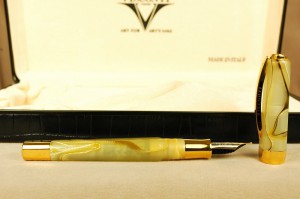 New generation pen collectors likely didn’t grow up using fountain pens. Fountain pens, whether vintage or modern, are still extremely exciting and fun writing instruments to use in their daily lives. They are just learning about the joys and fun to be had by writing with everything from extra-fine nibs to stubs to flexi-points.
New generation pen collectors likely didn’t grow up using fountain pens. Fountain pens, whether vintage or modern, are still extremely exciting and fun writing instruments to use in their daily lives. They are just learning about the joys and fun to be had by writing with everything from extra-fine nibs to stubs to flexi-points.
Cursive writing hasn’t been taught in public schools in most cities for most of this new millennium. New generation collectors are fascinated by cursive handwriting and are often very eager to try their hand at classic Spencerian script.
They are diving into all of the various colors of ink available to see which ones they like best. They are making the most of some of the options not available to veteran collectors when the veterans were first getting into the hobby.
I have heard many veteran collectors sneer at the fact new generation collectors are users and not completists. This is a misguided sneering that I really want to squash.
As I stated earlier, veteran collectors had a very different economy to start collecting. Not only were vintage pens prevalent in “the wild” for really cheap prices. Wages back then kicked the asses of wages today.
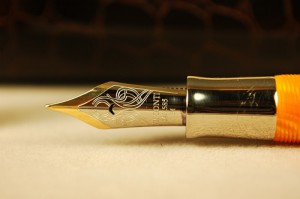 New generation collectors are buying a lot of cheap Asian pens and Lamys because they are affordable and under $30. New generation collectors likely came out of college with $50,000 or more in debt. Modern housing often costs 50% of their paychecks. Jobs for 20 and 30-somethings are hard to get, and a lot of them are excited if they can get a job that pays at least $40k a year. Plus, many are getting married, starting families and juggling other traditional responsibilities.
New generation collectors are buying a lot of cheap Asian pens and Lamys because they are affordable and under $30. New generation collectors likely came out of college with $50,000 or more in debt. Modern housing often costs 50% of their paychecks. Jobs for 20 and 30-somethings are hard to get, and a lot of them are excited if they can get a job that pays at least $40k a year. Plus, many are getting married, starting families and juggling other traditional responsibilities.
Base-line vintage pens are prohibitively expensive to collect as a completist would. If you could buy a good used Parker 51 in 1975 for fifty cents, that same pen now likely goes for $60 to $80. If you want a green, blue, black, golden pearl, grey and burgundy Parker Vacumatic in the standard size, five of them will cost at least $85 a piece and the burgundy will get at least $150. That’s $575 all together. You can spend $2,000 easily to get their matching Maxima companions and another $400 for the demis. Toss in Shadow Waves and Toothbrushes…. Well, you get the idea.
Plus, there is a huge degree of competition from modern pen brands. Vanishing points, Pelikans, limited editions, inexpensive pens with unique, smooth nibs…there’s a lot out there to explore.
So, while new generation collectors aren’t completists, they are serious collectors. Frequently on a budget, they eagerly try a little bit of everything: needle-point extra fines, flexi wet noodles, stubs, vac fillers, limited editions, lever fillers and all of the other cool features that make up the pens we all love.
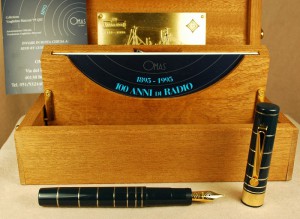 On my site and at my tables at pen shows, I find that the new collectors are very curious about the vintage pens, but they are a little gun shy. They’ve likely seen and read a lot about them, but they have never seen them in the flesh or tried them. Many are a little nervous to admit that they don’t know much but want to learn, so I make sure to give them basic rundowns of the pens, which I put in their hands and let them try. As expected, they often love the vintage and want to explore more. So if you’re a veteran vendor, don’t be afraid to talk to the young’uns and share a little of what you know and let them try the greatness of vintage.
On my site and at my tables at pen shows, I find that the new collectors are very curious about the vintage pens, but they are a little gun shy. They’ve likely seen and read a lot about them, but they have never seen them in the flesh or tried them. Many are a little nervous to admit that they don’t know much but want to learn, so I make sure to give them basic rundowns of the pens, which I put in their hands and let them try. As expected, they often love the vintage and want to explore more. So if you’re a veteran vendor, don’t be afraid to talk to the young’uns and share a little of what you know and let them try the greatness of vintage.
Finally, it is important to note the art of the deal.
New generation collectors have lived their entire lives in a price-posted-is-price-paid economy. Even many car dealerships today don’t negotiate car deals. The older generations hated this enough to kill these type of sales in most retail environments. Plus, the internet makes it impossible to negotiate a price but EASY to comparison shop. It is safe to say that most new generation pen collectors go into pen shows expecting honest, competitive pricing on the merchandise and no-hassle honest deals. Many have done their homework and won’t even deal with somebody with seemingly inflated prices. As users, many new generation collectors expect the pens they buy to work, and if you don’t inform them upfront that the pen is unrestored, it is reasonable for them to feel ripped off, especially if you won’t refund the money once they discover this issue.
It can be argued a pen show is a buyer-beware environment, but forget about repeat business if you run your business this way. Now if you are the type of vendor with 500+ pens on your table, it is safe to say you might not know which pens are restored. Newbies won’t fault you for that, as long as you go over the pen with them to make sure it is what they want. Besides, if you have that many pens, if that pen turns out to be something they don’t want…you’ll likely have another they do. Build trust with them, and they’ll bring their friends to buy more. As simplistic as it sounds, it really boils down to treating one another with fairness and respect.
God knows I’ve gone on long enough for one post, but I hope that I’ve expressed many sentiments veteran vendors and new generation collectors feel. I hope this opens up some more discussion and tears down a few barriers between the two sides of this same pen collecting coin. We’ve got far more in common than we seem to know.
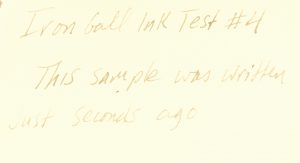



 Shopping Cart
Shopping Cart





